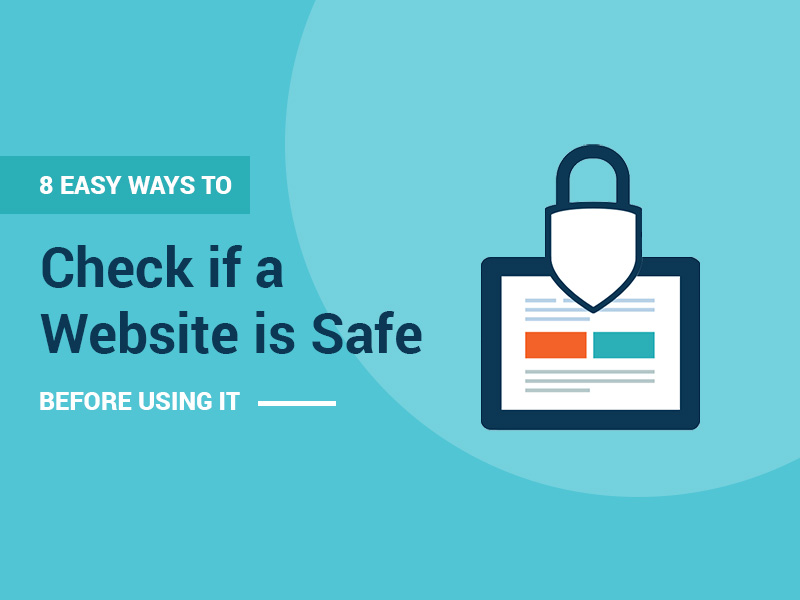With every passing year, websites store more critical information and personal data. This means there is greater potential for it to be lost or stolen. Cybercriminals wait to profit from the loss of valuable data, so you need to be even more careful when using the internet.
With the increasing awareness of the various dangers of the internet, many people want to know how to check if a website is safe before using it. So, if you’re looking for website security ideas, then you will always have better ways to check website safety.
What problems can unsafe websites cause for a user?
You want to save time and browse the internet unhindered. But when you overlook the use of best security practices, there are numerous traps and pitfalls that wait for you:
- Clicking on malicious links causes malware to be downloaded to your computer and any network that you are connected to.
- Allowing using cookies means a site can potentially follow your personal use of the internet at any time.
- By tracking your internet use, cybercriminals can hack into your browser history to find the accounts you use.
- Visiting malicious sites can cause browser-based cryptojacking through browser extensions that inject malicious scripts to the browser.
- Using social engineering techniques, hackers can gather your personal information through social media connections.
Website safety checklist
When you need to check if a website is safe, it is good to start with a reliable checklist, so there is one for you here.
1. Check the URL
The easiest way to check a website is safe is to hover over the link without clicking.
This will show you the URL that the link leads to (in Firefox and Chrome, the URL is shown in the bottom left of your window). Here you can check that the URL looks legal, as fraudulent sites usually have spelling errors or excessive numbers. For example, Google and PayPal may be rendered as G00gle.com and Paypa1.com.
2. Use website safety check tools
There are various website safety checkers that can be used to verify websites. They can scan websites to check for malware, viruses, and any other forms of deception. Examples include Google Safe Browsing, Google Transparency Report, and VirusTotal.
3. Use browser safety tools
It is also in the interest of browsers to keep you safe online, so there are ways of controlling the websites you visit in your browser. All you need to do is check your settings or preferences, depending on the browser. Here you can disable unsafe content, send “do not track” requests to websites, and control which sites are allowed to access your webcam.
4. Check the website privacy policy
A good sign of whether a website is legit or not is its privacy policy. This is required by many countries and legal jurisdictions, and any respectable site should have one. In the policy, you can find the sections that are relevant to you, i.e., the part concerning personal data and how they intend to use it.
5. Look for signs of malware
There are a number of tell-tale signs that a website contains malware in one form or another. Often this can be in numerous popups with unlikely claims that are infected with adware or malvertising. If you are redirected to a completely different site that looks suspicious, then this can be a malicious redirect. This may be because the original site has been hijacked or was already fraudulent. You can also check for malware from excessive amounts of spam or warnings from the search engine using leading malware protection software.
6. Check for HTTPS
There is a difference between HTTP and HTTPS sites, where the “s” stands for “secure”. HTTPS sites are now more common and especially used for platforms where sensitive information is used, such as ecommerce or banking. This protocol means the website owner uses an SSL certificate which adds a layer of encryption to all communications. You can check for this in the URL or by looking for a padlock in the browser navigation. But remember that the HTTPS in the address does not guarantee the site is trustworthy.
7. Look at the trust seals
Beyond HTTPS, there are other ways that websites can show they are legit by using trust seals. These can be seen in icons that show “verified” or “secured” as a mark of approval from a security partner. These can be effective in gaining the trust of website visitors, but they also need to be closely inspected as they can be easily faked. All you need to do is click on the seal, as the ones that are legitimate will provide all the information needed.
8. Check the contact information
All organizations need to be legally registered, even if they solely operate in a virtual space. This means every website should provide contact information with names, addresses, and phone numbers, at the very least. Trust is naturally improved when more information is given. But if you are still unsure about the identity of a website, try giving the number provided a call. Shady ventures are less likely to answer the phone in the most professional way. You can also look at the domain owner using ICANN Lookup, which can give you all the contact information used to register the site.
The internet is a bigger place with every new day, and, unfortunately, many dishonest people look to take advantage of valuable information. But if you ever need to determine if a website is safe, remember there are multiple ways to check website safety to be sure. There are many pitfalls waiting for you in the vast cyber world, so it is always better to be safe rather than sorry.







